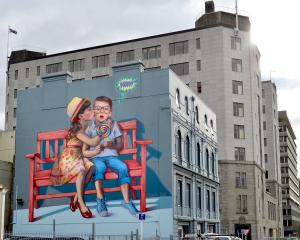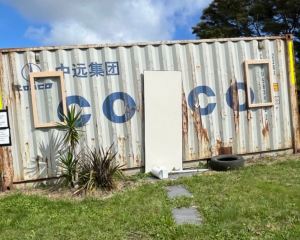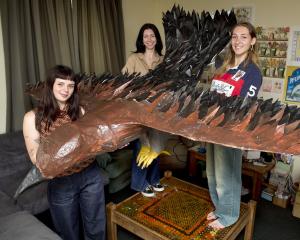In this week's Art Seen, Laura Elliott looks at exhibitions from Lakes District Museam & Gallery, Eric Schusser and Victoria Stevens.
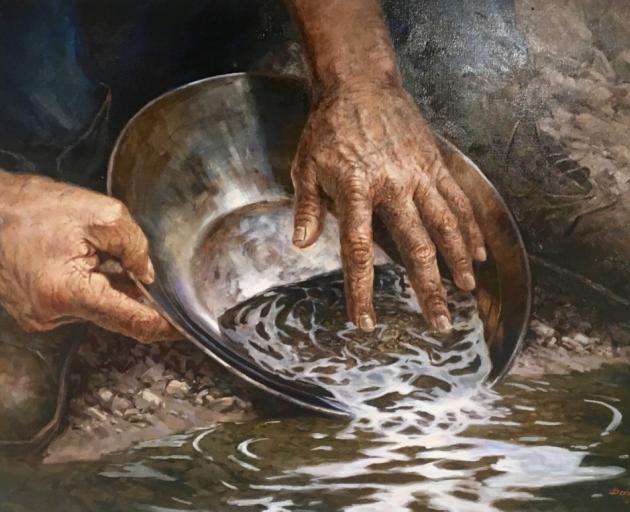 Hand of Gold, by Ben Ho.
''Arrowtown Autumn Festival Art Exhibition'' (Lakes District Museum & Gallery, Arrowtown)
Hand of Gold, by Ben Ho.
''Arrowtown Autumn Festival Art Exhibition'' (Lakes District Museum & Gallery, Arrowtown)

Arrowtown's Autumn Festival exhibition is always one of the highlights of the arts calendar, and this year's selection lives up to expectations. Emerging artists exhibit alongside the very experienced, and every work pushes the overall standard higher. As would be anticipated in a Central Otago show, landscapes dominate the painting section, but the views of nature are filtered through the lenses of very different imaginations.
Ro Bradshaw recycles waste materials and incorporates multiple layers under glass to create her highly effective, three-dimensional Kawarau Gorge, in which a lone bird flies against the greyness of sky blending into mountain, and a tree extends in melancholic shadow over the composition, while Sarah Ryder uses largely negative space to bring Queenstown Bay to life.
Esther Dexter's Once upon a time on the main street employs thick black lines and blocks of autumnal-toned colour, and Bridget Paape's charming illustrative figures cluster among the fallen leaves in Market Day. Priscilla Clare's Castle Hill and Paul Samson's Flat Earth are studies of form and tone, stripping the landscape to its essential shades, curves and planes, rendering it intriguingly alien in the process. Among the artists introducing a human presence to the subject matter are Jasmine Middlebrook and Ben Ho, each depicting flesh that captures warmth and movement.
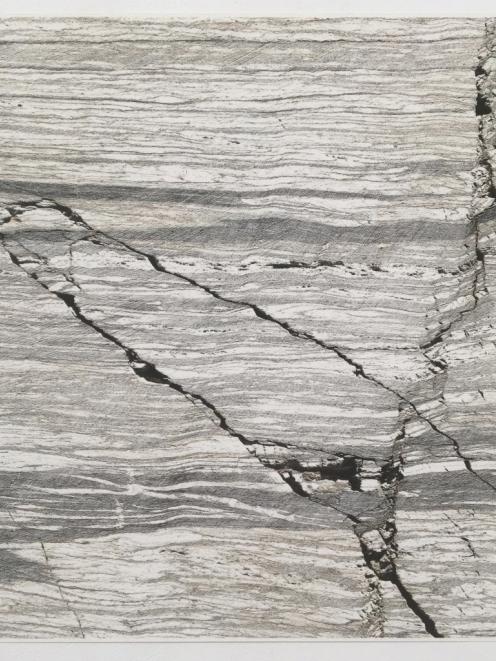 Surface, by Eric Schusser
''Surface'', Eric Schusser (Hullabaloo Art Space, Cromwell)
Surface, by Eric Schusser
''Surface'', Eric Schusser (Hullabaloo Art Space, Cromwell)

Eric Schusser explores new territory with ''Surface'', stripping back the wide lens and majesty of his classic fine-art landscape photography, and zooming in to focus on the texture of the rocks and roads that partly ground those scenes. In a series of striking images, photographed slices of recently cut schist from Poolburn are displayed like mosaic tiles, holding a definite sense of three-dimensionality.
You have a sense of being able to reach out and feel the roughness of every tightly-compressed layer, and test the depth of the cracks that slice through the core as if struck by lightning. There is a weathered solidity to the rock surfaces, as if they wear their lines and grooves like wrinkles in skin, a visual map of history and experience.
Schusser's portraits of roads are equally rich in textural detail, with little lines feathering out like cracks in pottery or the whorls in a fingerprint. In these works, he takes inspiration from historical cyanotype photographic processes, but plays with elements of the antique and the modern, using digital techniques to help reproduce the effect of age.
It creates a fascinating juxtaposition between old and new: the centuries of nature at work in building up the rock, the hand of man in laying down the roads, the intricacy and painstaking work of the early photographers, and the boundless possibilities offered to the modern artist with the rise of technology.
 Travel Well, by Victoria Stevens
"Ninety'', Victoria Stevens (Central Stories Museum & Art Gallery, Alexandra)
Travel Well, by Victoria Stevens
"Ninety'', Victoria Stevens (Central Stories Museum & Art Gallery, Alexandra)

Victoria Stevens' ''Ninety'' features 90 intricate textiles, one work to mark each year that her mother lived without her mother, who died in childbirth in 1925. Every handstitched item acts as a historical record, the collective pieces tracing back through a very personal journey and the widespread traditions of handwork.
The works are predominantly dyed and stitched in shades of blue, a nod to the old practice of ''blueing'' laundry to restore an illusion of freshness to items yellowing and greying with age, and the colour that the artist associates with contemplation and reflection.
Stevens searches for her own sense of identity through each tiny stitch, reaching into the past to establish a connection with her grandmother, a continuing bond of multiple generations of seamstresses threading their life stories into their work. Scraps of poetry adorn tiny sewed garments and objects, bringing an incredible sense of pathos, and in the entirety of the collection there is the sense of something both missing and found.
The dresses and delicate little shoes hang in ghostly silence, as if they ought to be twirling around small limbs, but each layer of fabric seems to preserve a fragment of a rich and important life. The overall feeling is one of hope, curiosity and continuity, just edged with melancholy.
The exhibition defies any belief that the applied arts lack the emotional resonance of the fine arts.








